A Look Inside Gio Ponti’s Neighborhood
- Oops!Something went wrong.Please try again later.
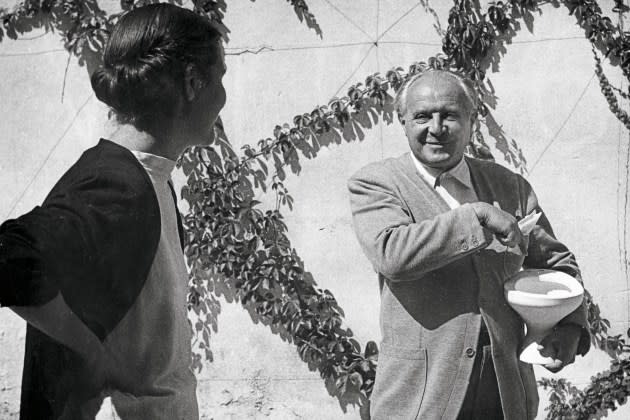
It’s just about merenda time on Milan’s Viale Coni Zugna in a 1930s-era building south of the city center designed by Gio Ponti called Domus Adele. Two local women are having a cool drink as the ebbing rays of the summer sun flood the arched window, while a pre-teen chats in another room about a Netflix series and smart phone plans.
The owner, Francesca Russo, was raised in the area, and has seen the fur-coat studded streets fade and come back to life in a contemporary age with baby carriage-pushing families, bankers on bikes, the fashion set and corresponding fashion show traffic. She decided to splurge on the three-bedroom apartment in 2008 for a few reasons: the area’s charm, the high ceilings, ample light on the upper floors, thick walls that keep it cool in the summer and warm in the winter and, yes, because “it’s a valuable asset” she hopes to pass on to her daughter.
More from WWD
Conceived as a typical home, Domus Adele, despite its prestigious provenance, is laden with a typical slew of problems: a leaky roof after a major summer storm and falling handmade tiles that, according to the local historical authorities, must be replaced with the exact same ones from 85 years ago. Tiles were an obsession of Ponti’s, rooted in his time at Richard Ginori, where he rose to artistic director and was able to imbue his love of painting with design and decor.
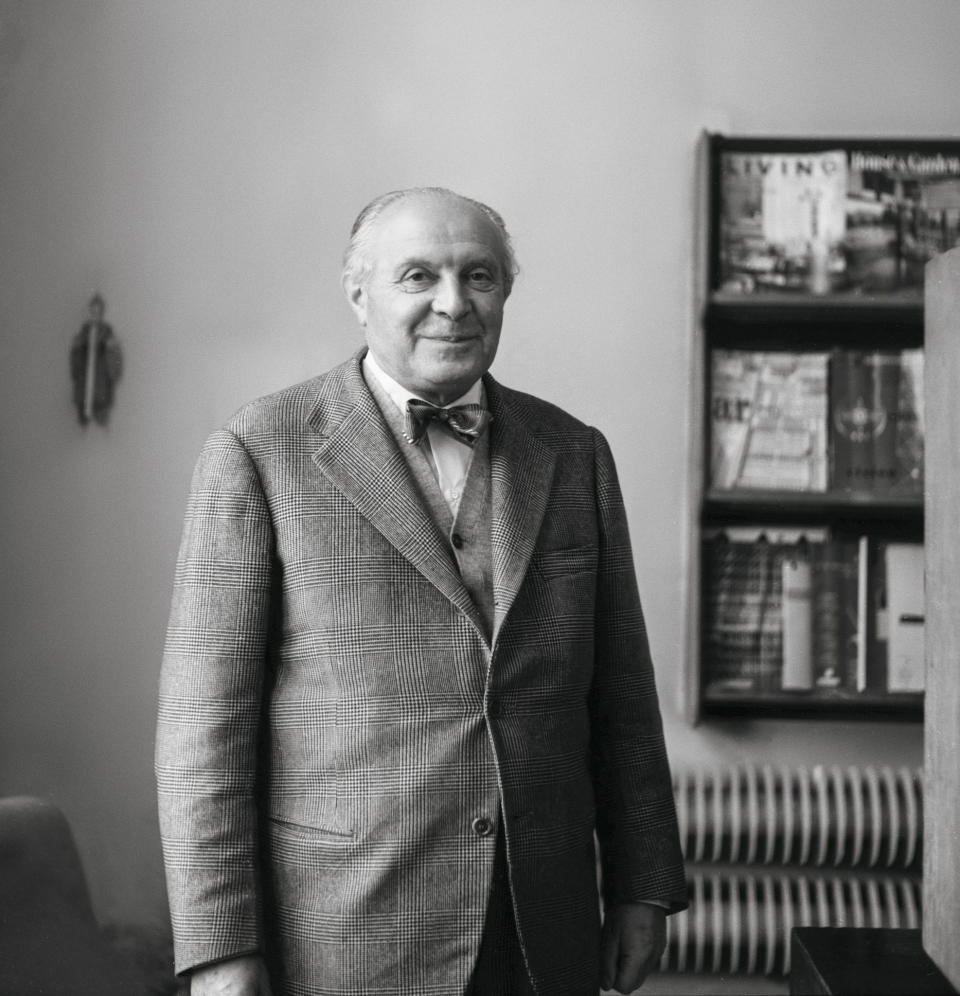
All of Ponti’s Milan homes were conceived as emblems of “pleasant” urban architecture, according to the book “Gio Ponti” (Taschen), and shaped in close collaboration with the Gio Ponti Archives and its founder, Ponti’s grandson Salvatore Licitra. “Unpleasant buildings, he said, were the result of a moral shortcoming, not an economic one, as they derive from a lack of thought,” the book states.
Domus Adele is pleasant indeed, Russo confirms.
“The home costs more than most to maintain, but it’s a charming flat, so it doesn’t matter,” she says.
Her space was cut into multiple dwellings to reflect modern, reduced upper class spending power and is one-third in size, versus the expansive full-floor home Ponti envisaged on a quiet street in the 1930s. “Once upon a time, there were servants here, servants’ quarters…the room we are sitting in was the dining room, facing what used to be countryside. Back then wealthy people wanted to face the street, there weren’t hardly any cars here when it was built. Times have changed,” Russo says.
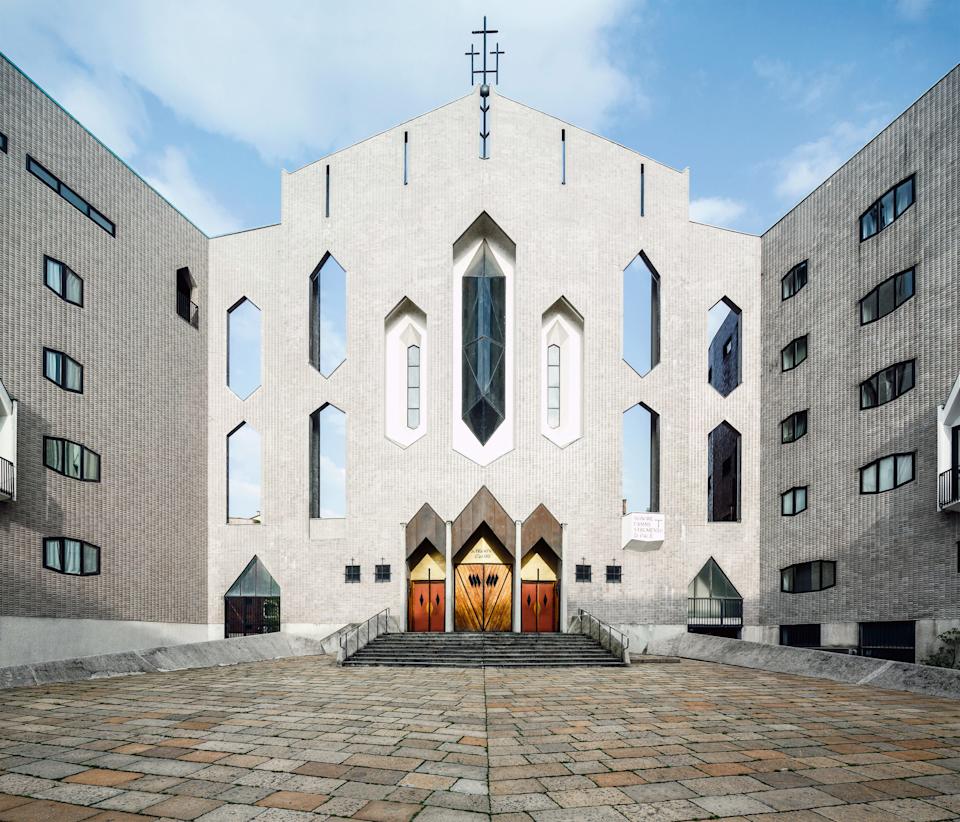
A few streets away, inside San Francesco d’ Assisi al Fopponino on Via Paolo Giovio, the Saturday vespers are being recited by an elderly woman who recites each psalm steadily, even though her mic isn’t working. At first blush the 1960s-era church looks like it was made of the same diamond cutouts that make up paper snowflakes. A design-curious Milan resident from Genoa says he’s surprised to find such a marvel in an indiscreet residential location.
“This is so cool. I had no idea this was even here,” he says, catching the last Saturday mass before jetting off for the last part of his summer vacation. The late summer heat permeates and members of the congregation fan themselves before Francesco Tabusso’s 1975 tempera and oil painting, “Canticle of the Creatures,” a depiction of Saint Francis in the forest.
To achieve the look of a dynamic, animated facade, Ponti sought out multidimensional, iridescent diamond-shaped ceramic tiles typical to the sort of religious buildings he is known for, like the Catholic cathedral in Taranto, Apulia. San Francesco d’Assisi al Fopponino — with its delicate brass pendant lamps and its jagged, geometric organ — is a testament to a time when Ponti turned his attention to the Far East, creating futuristic ministerial buildings in Islamabad in Pakistan and a villa for department store magnate Daniel Koo in Hong Kong, the book suggests.
Well-known designer, academic and veteran corporate identity director of historic typewriter-to-computer firm Olivetti, Albert Leclerc was an intern of Ponti’s in 1961. He fondly remembers when these churches were glorious cardboard renderings spread out in the studio. Located behind the Ponti family home, Studio Ponti-Fornaroli-Rosselli, a place Ponti referred to as the “capannone” (shed) taught the novice that work can actually be fun, he says.
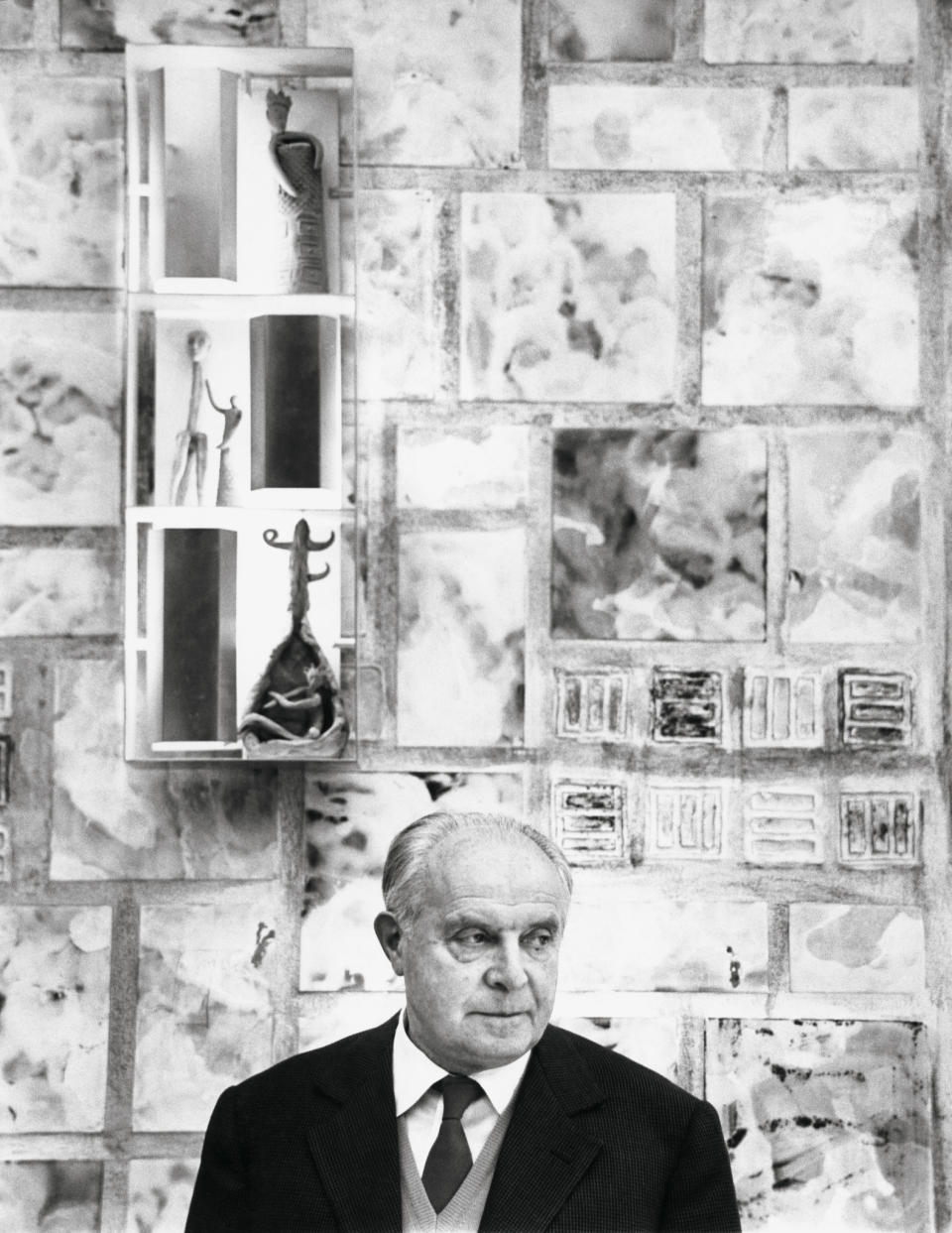
“I was there and was happy about being together with the greats of design and architecture. It was a dream for me to be in that sort of creative environment every day,” the 88-year-old Montreal native recalls, sitting at his dining room table in Milan surrounded by his own Crayola-colored “palingenesis” sculptures.
Ponti was generous not only with his know-how but also with his time, especially with his students at Milan’s Polytechnic University, Leclerc recalls. Leclerc, who also trained under Italian architect Ettore Sottsass, was occasionally invited to Ponti’s home for coffee, along with his design peers.
Catty-corner from Milan’s Parco Solari, where the laughter of children can be heard on any given day weather permitting, lies a condominium building called Domus Attica, perhaps one of the greatest of all tributes to Ponti. The building was designed in 1957 and marks the place where the Milan native would spend his final days in a home he considered to be the expression of his culture of living, his passions and his themes. The custodian of the building greets guests with discernment. “You wouldn’t believe the number of tourists that pass by here,” Licitra says, entering the foyer.
The architect and designer’s home was an open plan space on the eighth floor and featured interconnecting rooms with sliding doors that were practical and represented modern living and the needs of growing families in urban environments. The facade was envisaged to allow for superimposed bands — on each floor, residents were allowed to choose their own outside color and window patterns, in a process Ponti called “spontaneous architecture.”
In Milan’s ultimate family neighborhood, it’s easy to miss the subtle smog-stained plaque on the building that reads: “In this house, envisaged by him, lived Gio Ponti.”
“So…what stories can I tell you?” Licitra says as he takes a seat on a Gio Ponti-designed chair in the nonchalant setting of the Gio Ponti Archive. The eye wanders rapidly in the office that features widely known icons like the D.859.1 table, reproduced by Molteni&C, the 687 chair designed for Cassina, and the 1954 Coffee Table with Grid Top, as well as unexpected treasures like the reproduction of a chair designed for the SS Andrea Doria, the luxury transatlantic ocean liner of the Italian Line that sunk off the coast of North America in 1956. “This is famous because it sank,” he says.
Licitra switches between referring to his grandfather by his last name and nonno as he talks about the Ponti family legacy, pointing in passing to a Ponti table in need of repair. “This table is oak and I need to get this fixed by a craftsperson…and over here is a chair of which I no longer remember the name because he made so many models…this one from the ’50s; I really find it beautiful though.”
Ponti was incredibly generous with his vision and know-how, which led to a lot of models that are like his but by someone else, Licitra says. As a result, Licitra spends a lot of time authenticating Ponti’s designs.
To make matters more confusing, Ponti also teamed with a man named Walter Ponti simply because they shared the same last name. “One day his wife said, ‘Walter, why don’t you call Gio Ponti and maybe you can do something together,’ and so he came here to Milan to meet Ponti, after writing this really enthusiastic letter,” Licitra says, pointing to a peculiar chair called Sedia di Poco Sedile (chair with a small seat), a sort of backward design in which the hind legs of the chair are positioned in the front and the front legs in the back. “It’s surprisingly comfortable,” Licitra reassures.
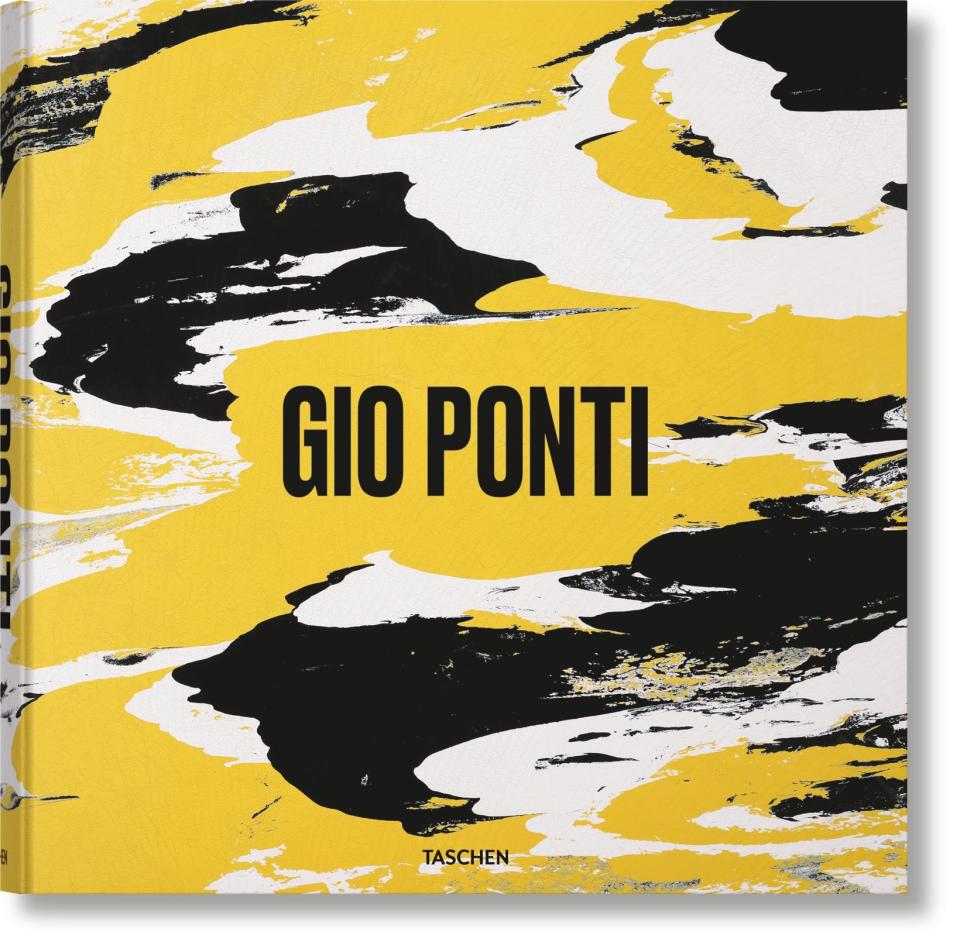
Woven between old Ponti experiments and reproductions are the photos Licitra and his wife took in New York City, and on the wall, another piece, an optical illusion Licitra produced, in which an eye opens through a handmade grill and closes as the viewer draws closer.
Licitra, the son of Lisa Licitra Ponti, editor in chief of Domus Magazine (the magazine Gio Ponti founded in 1928), is a contemporary art photographer and has also been a conceptual artist since the ’80s.
The next generation is also carving their own path. Nicola, Licitra’s 22-year-old son, great-grandson of Gio Ponti and young photographer, has taken up temporary residence in the archive, until his new place is ready. Licitra’s mood lifts as he speaks about his growing family, which includes three grown children and four grandchildren. One gets the feeling that Ponti, born Giovanni Ponti in 1891 to a Milanese family, was destined to see his legacy flourish right here at home.
“Some are here, and some are there, but we are all in Milan,” Licitra says.
Best of WWD

